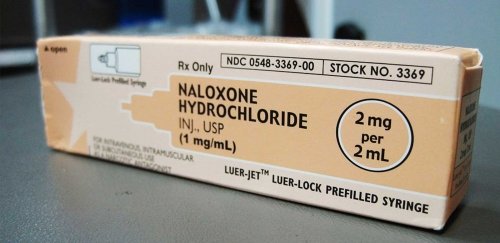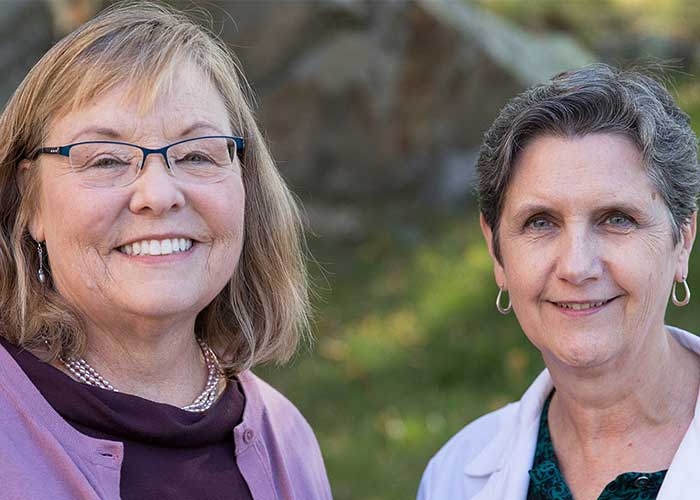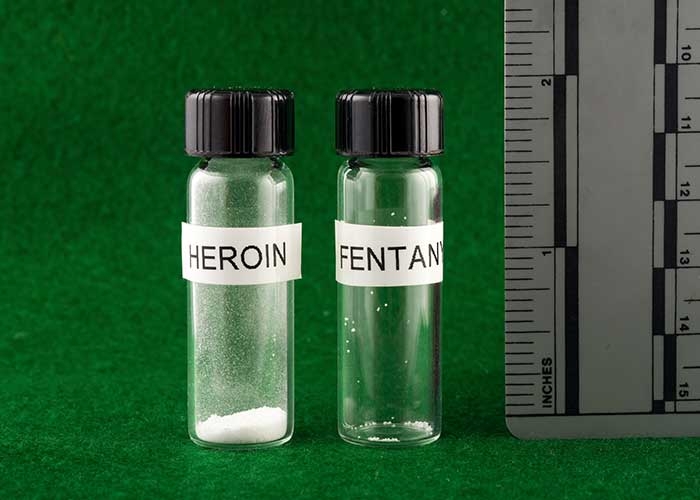RIC Campus Now Equipped with Naloxone, an Antidote for Opioid Overdose
- News & Events
- News
- RIC Campus Now Equipped with Naloxone, an Antidote for Opioid Overdose

“The opioid epidemic is the worst public health crisis in decades,” said RIC Professor of Nursing Joanne Costello.
Opioid overdoses killed more Americans than gun deaths and car crashes in 2015 and this deadly epidemic shows no signs of slowing down.
In 2015, the latest year for which statistics are available from the Centers for Disease Control and Prevention (CDC), more than 50,000 Americans died of a drug overdose. Sixty-three percent of those deaths involved opioids – a class of drugs known as painkillers.
That same year Costello and Lynn Wachtel, director of College Health Services, led an effort to bring naloxone – an antidote that can reverse an opioid overdose – to RIC’s campus.
“We recognized that it isn’t a matter of ‘if’ an overdose could happen at RIC but ‘when,’” said Costello. Rhode Island is ranked among the five states with the highest rate of deaths due to drug overdose, said the CDC.

Costello and Wachtel invited the Naloxone and Overdose Prevention Education Program of Rhode Island to train campus police and health services staff in the use of naloxone.
Today RIC police carry naloxone kits in their cruisers; there is a kit at the Office of Security and Safety, at the Office of College Health Services, the Counseling Center and in each of the dorms.
“We want to get ahead of it,” said Chief of Campus Police Fred Ghio. “So far, we’ve been extremely fortunate. We haven’t had any incidences of overdoses on campus.”
Wachtel explained that “opioids are painkillers that act on receptors in the brain. With continued use, they desensitize the brain’s receptors and the user needs to take more and more of the drug to get the same effect.”
Overdose occurs when the person experiences a dramatic decrease in respiration, causing them to go into a deep, coma-like sleep.
Naloxone in nasal form, which RIC has acquired, is administered by squirting half of the bottle in one nostril and half in the other. If naloxone is administered quickly enough, within five to six minutes, the person will immediately snap out of the coma and awaken.
“The way naloxone works is that it floods the receptors in the brain, pushing the opiate off the receptors, but it only lasts about 20 or 30 minutes,” said Wachtel. “If the person is not taken to an emergency room, they could re-overdose when naloxone leaves those receptors. Without emergency intervention, the person may stop breathing altogether.”
One of the strongest opioids on the market is fentanyl. Fentanyl is between 50 and 100 times more potent than heroin and has been involved in more than 50 percent of opioid overdose deaths.
When heroin dealers discovered that fentanyl delivers heroin’s high at a fraction of the cost, the production of illicitly manufactured fentanyl began as a cheaper, more efficient way to cut heroin. However, when fentanyl (or a fentanyl analog) is mixed with heroin, cocaine or another drug, it is never mixed evenly and may contain a lethal dose. In fact, those who are purchasing an illicit drug may not know their drug is laced with fentanyl.

Although half of all U.S. opioid overdose deaths involve fentanyl, nearly half involve prescription painkillers, said Wachtel and Costello. The most common include: methadone, oxycodone (such as OxyContin, Percodan and Percocet) and hydrocodone (such as Vicodin).
The opioid epidemic began with the overprescribing of painkillers, said Wachtel. Contributing to the epidemic were pharmaceutical companies who marketed their opioid painkillers as safe and effective. This allowed the drugs to proliferate, leading not only to widespread painkiller misuse but also to the misuse of more dangerous opioids like heroin and illegally manufactured fentanyl.
“People don’t just go out and say, ‘I’m going to start using heroin today,’” she said. They may have started with a legitimate prescription for pain and developed a dependency. When their refills ended, they began buying the pills on the black market at $1 a pill. If their habit is 30 pills a day, it is cheaper and more sustainable to buy heroin at $6 a dose.
Among new heroin users, approximately three out of four report having abused prescription opioids prior to using heroin.
“These are our brothers and sisters, our aunts and uncles. It’s actually even our grandmothers,” said Costello. “An elderly person may be suffering from back pain and is put on pain meds. A soldier is wounded or an athlete has a sports injury and is prescribed a painkiller. There are a lot of reasons why people become addicted to opioids.”
Though Naloxone distribution and other harm-reduction programs are not the solution to the opioid epidemic, naloxone will help keep individuals alive so that they can work toward recovery.
A talk regarding the national opioid epidemic by Shannon Monnat, chair of the Lerner Center for Public Health Promotion at Syracuse University, will be held at RIC on Friday, Oct. 27, from 10 a.m. to noon in Alger Hall, Room 110. This event is free and open to the public. To register, click here.
